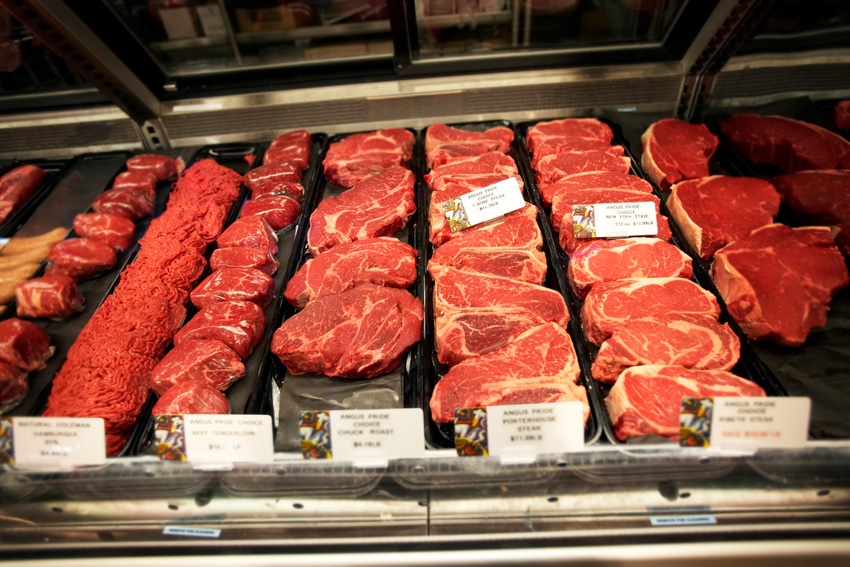Chinese, Russian and Mexican meat industry experts share glimpse into countries.

Markets that pose definite challenges but also provide great opportunities for red meat exporters were the focus of a World Meat Congress panel discussion titled “A World of Change: Factors Affecting Red Meat Trade.” The 22nd World Meat Congress, held May 30-June 1 in Dallas, Texas, was hosted by the International Meat Secretariat and the U.S. Meat Export Federation (USMEF) and attracted more than 700 attendees from 48 different countries.
U.S.Meat Export Federation (USMEF) economist Erin Borror served as moderator for the presentation, which opened with a broad look back and ahead at world meat production, consumer demand and trade. Timely topics such as obstacles in trade negotiations and the effects of potential trade wars were a big part of the discussion.
Experts from China, Mexico and Russia each offered insights into the factors that are expected to fuel the world’s red meat industry in the near future.
Amy Xu, general manager of the import division for China National Cereals, Oils & Foodstuffs Corp. (COFCO); Pablo Sherwell, head of RaboResearch Food and Agribusiness -- North America, and Daniil Khotko, a leading industry analyst for IKAR, a company that monitors and forecasts Russia's agricultural commodity markets, made up the panel.
They were joined by Michael Drury, chief economist for McVean Trading & Investments, who has extensively studied China and the effect its economic growth has on the rest of the world.
“The goal of the panel is to try to really hit on areas that are fast-changing and less understood,” Borror said. “It was an opportunity to bring experts from these markets and hear what’s happening on the ground – things that may not be readily accessible via data. It’s a chance to learn from inside the market as to what is driving economic growth and demand for red meat.”
China’s speedy rise as a dominant import market and the fierce competition to meet its growing demand drew strong interest from World Meat Congress attendees.
Xu noted that China's domestic pork production is rebounding. Pork import opportunities still exist, although questions remain as to the extent that future growth in pork consumption will create a need for more imports.
Xu explained that production and consumption of red meat and poultry over the past 10 years have grown very rapidly. However, she added that consumption grew faster than production grew, which provides plenty of opportunity for imports.
She pointed out that from 2007 to 2012, pork consumption grew faster than beef, lamb and chicken consumption, but from 2012 to 2017, beef consumption grew faster than pork, poultry and lamb due to income growth.
“Although beef grew fast, pork is still king, and I think pork is going to be king long term,” Xu said.
She said China is going to increasingly rely on imports as domestic production has been mostly stagnant.
“The beef consumption per capita for mainland China is still very low compared to our neighbors. I think there is plenty of room to grow,” Xu said.
Still, she explained that Chinese consumers remain price-driven.
“Opportunities do exist for high-end beef cuts, because a segment of the population is able and willing to pay the price,” Xu said. “U.S. beef is on the high end of the price scale, but there is great interest in U.S. beef.”
Xu also explained that convenience has become more important to Chinese consumers as people are busier.
“Ready-to-cook and ready-to-eat are popular trends,” she said, which is why e-commerce and meal delivery platforms have become so popular in China.
Even restaurants are using ready-to-cook products, she added.
Challenges faced in Russia include questions about the expansion of domestic pork production, whether the country’s limited pork exports will achieve a major growth cycle and what effect this might have on Russian consumers who are sensitive to pricing. Russia’s beef industry is already hampered by price issues.
Still, Russian livestock producers have an eye on the global market. In the foreseeable future, Khotko feels that Russia is more likely to become a competitor to than a customer of U.S. pork and beef.
Borror pointed out that Mexico's domestic beef and pork sectors have attracted significant investment, but production growth may be offset by growing consumption, especially when it comes to pork.
“Mexican consumers have a much more positive view of pork than they did 20 years ago, and they are learning to eat pork in new ways,” Sherwell said. “Also, economic growth in Mexico has changed people’s diets. We’ve seen more protein put into their diets, and consumption rates have climbed.”
Drury focused his remarks on three key factors: complacency, especially with regard to a coming recession; volatility, and the speed at which change occurs, particularly in China. He highlighted that we live in a global economy, largely fueled by multinational companies, and offered insights on how future political shifts could have implications for international trade. Drury also noted that he doesn’t see the Trump Administration changing its approach to trade.
About the Author(s)
You May Also Like



